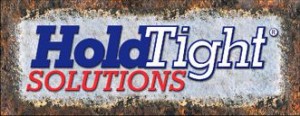TEST PROTOCOL for CORROSION INHIBITORS OR SALT CLEANERS for FLASH RUST
Posted on 10. May, 2011 by Lydia Frenzel in Flash Rust
This is a Test Protocol for Corrosion Inhibitors or Cleaners for Flash Rust.
Prepared by Lydia Frenzel from a specific Proprietary Inhibitor and Cleaner manufacturer’s sheet. Most of the manufacturers have letters or tests results from specific coatings manufacturers. If you contact me, I will send you the link to the source material.
OBJECTIVE: This document provides guidelines for testing Proprietary Inhibitor and Cleaner used according to its manufacturer’s instructions. These test guidelines are necessary because applicable ASTM test procedures specifically require that tests be conducted in a manner consistent with the manufacturer=s instructions for use of the product tested. Since the performance of the product is application sensitive, this step by step test procedure should be helpful in the evaluation of its performance in various surface preparation methods.
Background: This gives the specific background of the Proprietary Inhibitor and Cleaner.
TEST PROCEDURE: Panel Preparation Steel test panels should be used when testing for rust formation. The size of the panels may vary but generally are 3″ x 5″ x 0.25″. Ten panels per coating is generally adequate to test for both salt removal and coating adhesion. All panels, with the exception of the control panel, should be immersed for 100 hours in an 8-10% weight by weight (w/w) sodium chloride solution to accelerate rust development. The control panel which was not immersed in salt water solution will establish the baseline reading for salts and other contaminants levels. In addition to the control panel, leave one test panel out of the blast sequence to measure the salt levels deposited after 100 hours of immersion. The other eight panels will be blasted to SSPC-SP10 (NACE 2)(Near White) using the either the water-abrasive blasting method or the dry blast method.
For Water-Abrasive Blasting: Per manufacturer’s recommendation for water-abrasive blasting, Proprietary Inhibitor and Cleaner should be used in both the blast and the wash down cycles. In the blast cycle the product can be injected into the blast stream by using an injection pump at low dilution of 50:1 ratio of Proprietary Inhibitor and Cleaner to water or higher (as high as 250:1) only with potable water.
Pre-mixing of the product is also acceptable as long as the mixing ratio is the same (50 parts potable water or higher with 1 part Proprietary Inhibitor and Cleaner or higher).
In the wash down cycle in water-abrasive blasting it is critical that the mixing ratio not exceed 100:1, because the wash down cycle is the final rinse of the surface. Wash down not only cleans contaminants that were present before the blast but also removes shattered abrasive particles embedded in the surface profile during the blast cycle. These embedded particles have a potential to form rust on the surface because they are wet, may contain chlorides, sulfates, and other contaminants, and will attract oxygen in the air. Therefore, to get these particles out of the surface profile and achieve a perfectly cleaned surface a wash down is necessary.
Wash down as defined by the manufacturer should have at least 500 psi pressure @ 1-3 g.p.m. of water (potable) mixed with Proprietary Inhibitor and Cleaner at a 50:1 to 100:1 ratio (see manufacturer’s instructions).
WARNING: Dipping the test panels in Proprietary Inhibitor and Cleaner solution without using a pressure rinse will not remove the embedded abrasive particles and the salts trapped in the corrosion pits but will only wet them, virtually guaranteeing premature coating failure. Using Proprietary Inhibitor and Cleaner both in the blast and wash down cycles is a failsafe method to obtain maximum cleanliness of the substrate. After the wash down cycle is completed, allow the test panels to dry, usually 15-30 minutes, before they are coated or subjected to any other test. Failure to allow the surface to dry will also lead to premature coating failure. Understandably, for test purposes, higher than recommended concentrations may be used. The greater the concentration, the longer the drying time, but under no circumstances should a coating be applied over a wet or damp surface.
For UHP Water Jetting, waterjetting, water blasting (water with little or no abrasive at 25,000+ p.s.i.)
Typically chemicals are NOT used in the BLAST CYCLE.
Blast cycle: (optional) (applicable if, and only if, pump manufacturer approves.) Start with 250:1 Proprietary Inhibitor and Cleaner. If flash occurs, decrease water portion (increase portion) until there is no flash.
Wash down (rinse) cycle: Begin as soon as practical after the blast. If Proprietary Inhibitor and Cleaner was used in blast cycle, start with 200:1. If Proprietary Inhibitor and Cleaner was not used in blast cycle, start with 100:1. (In either case, wash downwater pressure should be at least 500 p.s.i. with a water flow rate of at least 2 g.p.m..). If the surface is highly contaminated with chlorides and/or the water is very hard (contains elevated levels of carbonates or bicarbonates) and/or the surface is deeply pitted or profiled and/or weather conditions are marginal, it may be necessary to decrease water and increase Proprietary Inhibitor and Cleaner from the recommended start ratios to 100:1 or 50:1, respectively.
For Dry Abrasive Blasting (wash down only, of course) Start with 50:1. Wash down pressure should be no less than 500 p.s.i. at 2+ g.p.m. 1,500+ p.s.i. is highly recommended to totally remove the dust and contaminants from the anchor profile. Then increase water portion (or decrease Proprietary Inhibitor and Cleaner ) until flash appears or appears before you wish it to (i.e., until your blast window is unsatisfactory.)
Three most critical points for wash downs:
1. Always use the appropriate ratio of Proprietary Inhibitor and Cleaner for the specific blasting application with potable water.
2. Always use recommended minimum pressure and flow corresponding to the blasting application used.
3. Do not dip in or brush the surface with Proprietary Inhibitor and Cleaner as a substitute for a pressurized rinse..
RECOMMENDED COATING TESTS: Test panels prepared in the earlier section can now be subjected to the following tests. These are ASTM tests, approved and recommended by both SSPC and NACE. Coating compatibility approvals of Proprietary Inhibitor and Cleaner from several coating manufacturer’s i.e. Sherwin-Williams, Carboline, Ameron, PPG, Tnemec, etc. are based on the result of these tests (please see Representative Coating Compatibility Chart). Some tests were completed at the coating company’s laboratory and some of them were conducted at an independent laboratory under the supervision of coating company corrosion specialist. The test results are available on request.
1. ASTM D 5894 – 96 Standard Practice for Cyclic Salt Fog / UV Exposure of Painted Metal, (Alternating Exposures in a Fog / Dry Cabinet and a UV / Condensation Cabinet)
2. ASTM D 4541 – 95 Standard Test Method for Pull-Off Strength of Coatings Using Portable Adhesion Testers
3. ASTM D 610 – 95 Standard Test Method for Evaluating Degree of Rusting on Painted Steel Surfaces
4. ASTM D 714 – 87 Standard Test Method for Evaluating Degree of Blistering of Paints
5. ASTM D 1654 – 92 Standard Test Method for Evaluation of Painted or Coated Specimens Subjected to Corrosive Environments
RECOMMENDED CHLORIDE REMOVAL TESTS: The following tests are recommended if the panels are tested for soluble salts or any other contaminant which Proprietary Inhibitor and Cleaner may effectively remove. These test are also described in SSPC-TU 4 – Field Methods for Retrieval and Analysis of Soluble Salts on Substrates.
1. ISO 8502-6 Bresle Sampling Method, (SSPC-TU 4, Section 3.3 – Adhesively Bonded Cell)
2. ISO 8502-5 Chloride Ion Detection Tube (SSPC-TU 4, Section 4.3 – Field Detection of Chloride Ion by Kitigawa Tube)
3. ISO 8502-1 Field Test for Iron II Salts in Abrasive Blast Cleaned Surfaces (Field Test for Soluble Iron Corrosion Products) (SSPC-TU 4, Section 4.8 Qualitative Field Detection of Ferrous Ion)
4. Quantab Strip (SSPC-TU 4, Section 4.4 – Field Detection of Chlorine Ion by Quantab Method)




